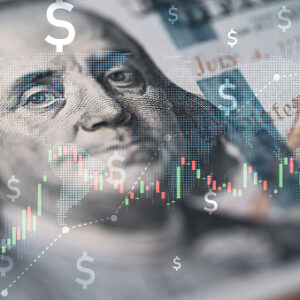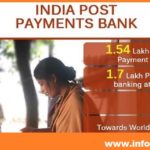The Goods and Services Tax was first proposed in 1999 during the meeting between the then Prime Minister, Mr. Atal Bihari Vajpayee and his economic advisory panel including three former RBI governors IG Patel, Bimal Jalan and C Rangarajan. In 2003, the Vajpayee Government formed a task force under Vijay Kelkar to recommend tax reforms. In 2005, Kelkar Commiittee recommended rolling out GST as suggested by the 12th Finance Commission. After the fall of BJP led NDA Government in 2004 and the election of Congress led UPA Government, the new finance minister P. Chidambaram in February 2006 continued work on the same and proposed GST rollout in 2010. However, in 2010, Asim Dasgupta resigned as the head of GST committee and the implementation was left. In 2014, NDA Government was reelected and under the leadership of Mr. Narendra Modi the GST bill was introduced in the Lok Sabha by the new Finance Minister Mr. Arun Jaitley. In May 2015, the Lok Sabha passed the Constitution Amendment Bill, paving way for GST. However, the opposition, Congress demanded the GST bill to be sent back for Amendments. Finally in August 2016, the Amendment Bill was passed and President Pranab Mukherjee gave his assent. The GST was implemented all over India on 30th June, 2017 Midnight. It was introduced as The Constitution (101th Amendment) Act 2017 following the passage of Constitution 122nd Amendment Bill.
Table of Contents
What is GST?
It is an Indirect Tax that replaced multiple cascading taxes levied by the Central and the State Governments.
The Indian structure is divided into two types of taxes- Direct and Indirect Taxes. Direct Tax is the one in which the liability cannot be passed on to someone else. For example Income tax has to be given by the one who is earning the income. However, under Indirect Tax the liability can be passed on to someone else. So when the shopkeeper must pay VAT on the sale of a product, he can pass on the liability to the customer. So the customer pays the price of the product and also the VAT that is to be deposited to the government. GST caters to this issue and the final burden on the consumer is reduced.
How does GST work?
There are basically 3 types of GST applicable:
- CGST– Where the revenue would be collected by the Central Government.
- SGST– Where the revenue would be collected by the State Government.
- IGST– Where the revenue would be collected by the Central Government for Inter State sale.
Now, suppose a retailer in Mumbai sells goods worth Rs.20000 to a consumer in Mumbai. The GST rate is 18% comprising CGST rate of 9% and SGST rate of 9%. The retailer would get Rs.3600 out of which Rs. 1800 would go to the central government and Rs. 1800 to the Maharashtra Government.
In the second case a dealer in Mumbai sells goods worth Rs. 20000 to a consumer in West Bengal. The IGST rate would be 18% and the amount received Rs. 3600 would go to the Central Government.
How will GST help the common Man?
GST is a comprehensive, multi stage, destination based tax that is levied on every value addition. The basis of GST is the flow of Input Tax Credit (ITC) along the entire value addition chain. ITC is the credit that is received by an individual for the tax paid on the inputs used in manufacturing the product. So if a total of 10% tax needs to be paid to the government, the individual can subtract the amount he has paid in the taxes at the time of purchase and submit the balance amount.
Discussing the above points:
Let’s start with the term Multi-stage. There are multiple steps through which the product goes through right from the buying of Raw materials to the product and finally reaching the end consumer. First Raw material is bought, then it goes for manufacture, then warehousing, sold to retailer and finally retailer sells the product to the consumer. During this process at every stage a value is being added. Let us assume the manufacture of shirts. When the Yarn is bought a value is added to it when converted in shirts. Then the manufacturer sends it to warehouse where labels and tags are attached to each shirt. Then the retailer who packages each shirt and invests into marketing of the shirt. It is important to remember that the GST would be levied at each stage of the manufacturing chain.
GST rate structure:
GST rates are mainly fixed at 5%, 12%, 18% and 28%.
- 0%– Milk, Eggs, Curd, Lassi, Unpackaged Foodgrains, Kajal, Education Services, Health services, Drawing and coloring books, Unpackaged paneer, Besan, Gur, natural honey, salt, fresh vegetables,phool dhari jhaadu.
- 5%– Sugar, Packed Paneer, Tea, Coal, Edible oils, raisins, roasted coffee beans, domestic LPG, skimmed milk powder, PDS kerosene, Cashew Nuts, Milk food for babies, Footwear(< Rs. 500), Apparels(<Rs. 1000), fabric, floor covering, matting, spices, Agarbatti.
- 12%– Butter, ghee, Almonds, Mobiles, Computers, Processed Food, Fruit Juices, Packed Coconut Water, Umbrella.
- 18%– Hair Oil, Ice creams, Pasta, Soups, Soaps, Toiletries, Printers, Toothpaste, Capital Goods.
- 28%– Small Cars, High End Motorcycles, AC and Refrigerators, BMWs, Cigarettes.









